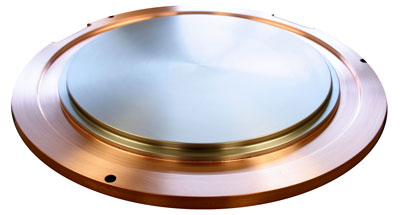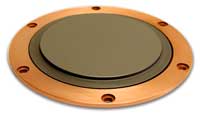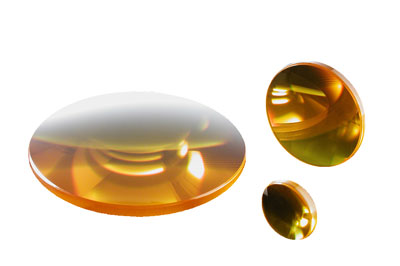Semiconducting chalcogenide glasses, first produced in the late 1950’s, are normally classified as large covalently bonded network solids that act as a single molecular complex. They exhibit some unique optical and electrical properties.
These properties make them promising candidates for modern technological applications. Specifically, ultrafast broad-band response times, tunable third order nonlinear refractive indices, and optical band gap energy make these materials useful for IR detectors, lenses, optical fibers, and photonic integrated circuits.

Chalcogenide glasses undergo thermally driven phase transitions, also giving them widespread use in rewritable CD and DVD memory technologies. In addition to current storage technology, they are also used in emergent Phase-change Random Access Memory (PRAM) development. An electric current pulse supplies the necessary heat to trigger the glassy-crystal phase transformation from amorphous to crystalline. The read-out is performed by utilizing the relatively big differences in electrical resistance of the two phases. The crystalline region may be transformed back to the glassy state by a brief exposure to local heat followed by rapid cooling. These processes take only nanoseconds.
Semiconducting chalcogenide glasses are normally classified as large covalently bonded network solids that act as a single molecular complex. The glass GexAsySe(1-x-y) is categorized into three groups. Groups 1 and 2 consist of tetrahedral GeSe4 and pyramidal AsSe3 configurations, where the Se atoms can adequately bond to all of the Ge and As atoms. Excess Se atoms form (Se-Se)n chains where n>2 and 1<n<2 in groups 1 and 2, respectively. Group 3 glasses have Se vacancies that are balanced by the formation of "defect" Ge-Ge and As-As bonds.

In order to harness the extensive capabilities of this material, LTS is performing research and development with chalcogenide glass in order to:
- Improve the glass microstructure in chalcogenide targets for higher quality deposition.
- Develop a baseline process for commercial production and application of PRAM.
QC Protocols are agreed upon by the end-user. Typically LTS conducts the following four experiments to check the materials:

- Powder XRD to confirm the material is fully-reacted, and its amorphous state.
- XRF to check the alloying ratio conforms to customer request.
- Optical microscopy on coupon to discern flaws.
- EDX on coupon to check local composition deviation.
We also offer pair distribution function analysis (based on EXAFS or x-ray diffraction PDF), ICP-AEM and ICP-MS, LECO, DTC, transport and optical measurements.
